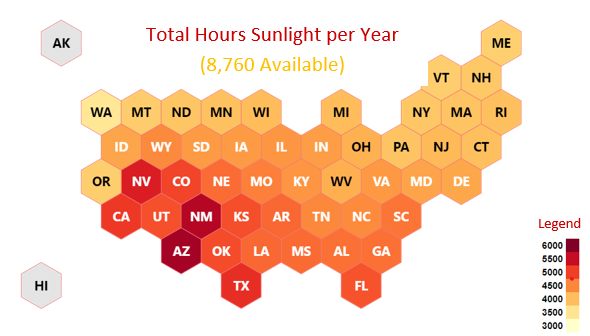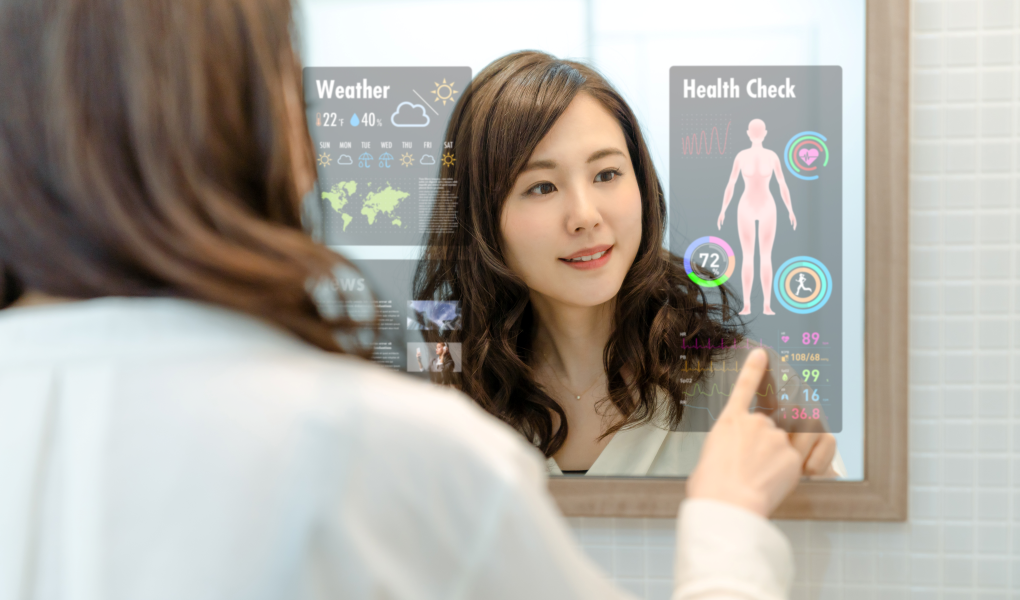

Shine a Light on Skin Cancer: Awareness and Prevention
June 11, 2024 | Featured, Population Health

Some of us are well aware that our skin has not seen the sun in, well, forever! As soon as the sun produces some warmer temperatures, we gradually come out of hibernation. The average amount of sunlight varies greatly depending on:
- Geographic location
- Local topography
- Large bodies of water
- Other environmental factors
In the United States, the average amount of sunlight in a year is about 4,400 hours or 50% of available hours. Why is this important? Well, because UV light from the sun is the number one factor in skin cancer cases. This summer, enjoy the sun, but let’s do it in moderation and with protection!
Check out how many hours of sunlight your state gets per year in the graphic below.

Skin cancer is the most common form of cancer in the United States, affecting millions of people each year. The good news? Skin cancer is also one by the most preventable cancers, with early detection playing a crucial role.
Preventing Skin Cancer
According to the Skin Cancer Foundation, over 5 million cases of skin cancer are diagnosed annually in the US alone. That’s one in five people by age 70! While basal and squamous cell carcinomas are the most common types, with high cure rates when detected early, melanoma is the deadliest form. Early intervention is essential for successful treatment.
Now, let’s take a look at some helpful guidelines around cancer prevention:
Sun Safety: Your First Line of Defense Against UV
Ultraviolet (UV) radiation from the sun is the primary culprit behind skin cancer. Here are some sun-safe practices to incorporate into your daily routine:
- Seek shade: Limit direct sunlight, especially during peak hours (10 am to 4 pm).
- Sunscreen is a must: Apply broad-spectrum sunscreen with SPF 30 or higher generously and reapply every two hours, or more often if swimming or sweating.
- Cover up: Wear protective clothing, including hats with wide brims and sunglasses that block UVA and UVB rays.
Know Your Skin: Early Detection Saves Lives
Regularly performing self-skin examinations is key to identifying suspicious changes. The American Academy of Dermatology (AAD) recommends the ABCDE rule for mole checks:
- Asymmetry: One half of the mole doesn’t match the other
- Border: The edges are irregular, scalloped, or blurred
- Color: The mole has uneven coloring, with shades of brown and black, or red, white, or blue
- Diameter: The mole is larger than 6 millimeters (about the size of a pencil eraser)
- Evolving: The mole is changing in size, shape, or color
Schedule regular skin cancer screenings with your dermatologist, especially if you have a history of sunburn, fair skin, or a family history of skin cancer.
Taking Care of Your Skin Is a Team Effort
Within the ICS insurance captive experience, we provide tools and resources to enable early detection of skin cancer, and best practice education and awareness to help guide decisions around skin cancer and other forms of cancer. We also partner with some of the leading hematology and oncology resources to treat and prevent all types of cancer.
This is just one of many benefits of working with an insurance captive and ICS. Reach out today to discuss how we can help your employees stay happy and healthy.


